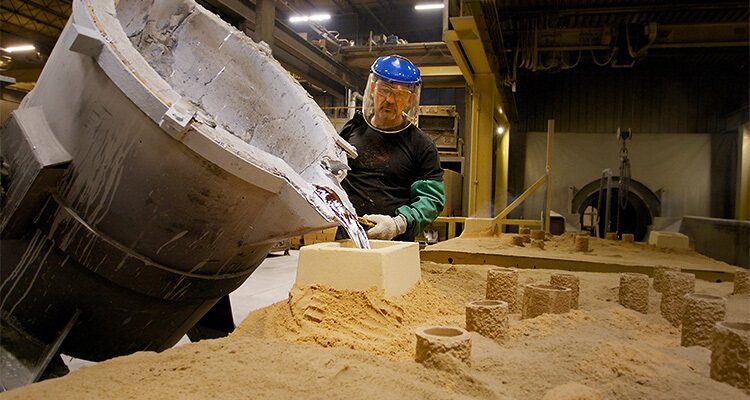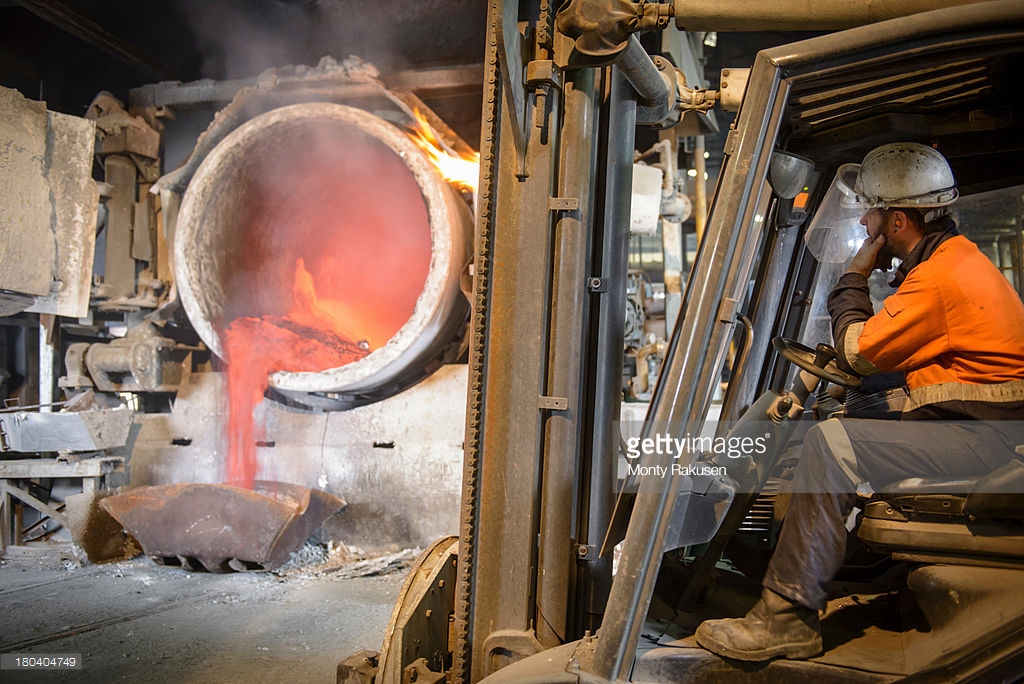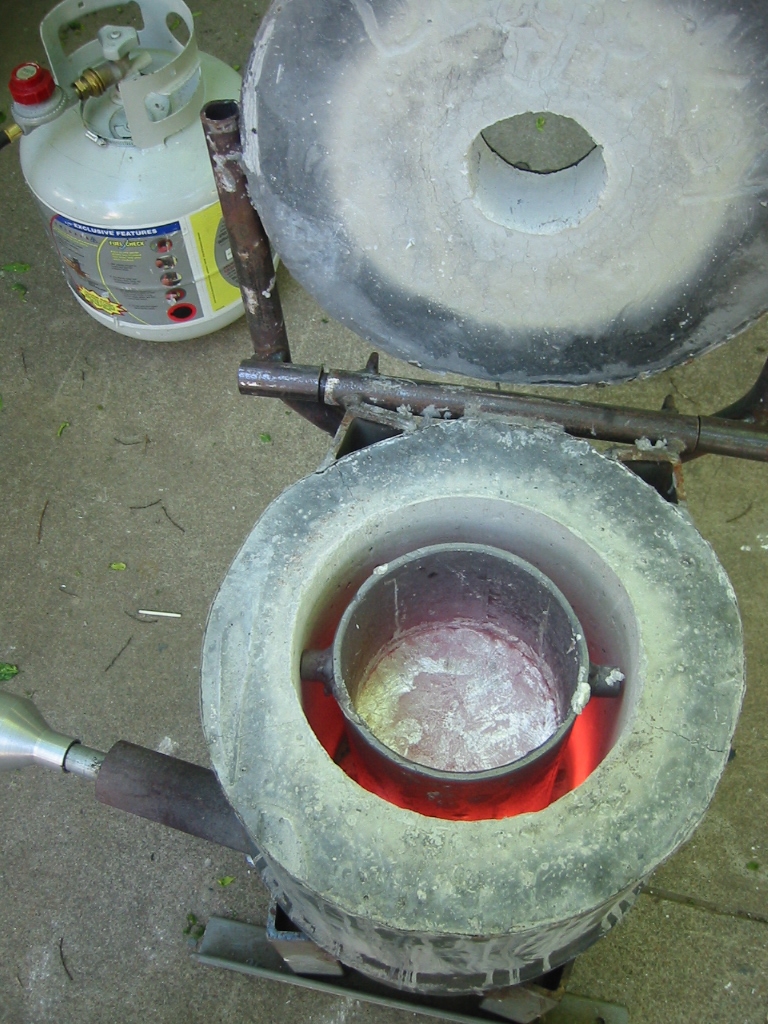How Wisconsin Aluminum Foundry Leads in Quality, Innovation, and Reliability
Checking Out the Innovative Techniques Utilized in Modern Aluminum Foundries
Modern aluminum foundries are undergoing a significant improvement with the fostering of cutting-edge techniques. Advanced casting methods, wise automation, and lasting techniques are reshaping production procedures. These advancements not only boost performance yet also address environmental problems. As the industry progresses, the integration of digital modern technologies plays an important role. Recognizing these changes is crucial for grasping the future of aluminum manufacturing and its effects for international markets. What lies in advance in this dynamic industry?
Advanced Casting Techniques

Furthermore, improvements in thermal control and mold layout have contributed to even more consistent casting outcomes. These technologies permit far better control of cooling prices, decreasing issues and enhancing mechanical buildings. Therefore, manufacturers can develop light-weight yet long lasting components, fulfilling the boosting demands of various sectors, including auto and aerospace, for high-performance aluminum components.
Smart Automation and Robotics
The integration of clever automation and robotics in aluminum foundries marks a significant innovation in producing efficiency. These modern technologies allow accuracy and consistency in manufacturing processes, considerably reducing human mistake and enhancing safety. Automated robot systems manage repeated jobs, such as molding, putting, and cooling, enabling human operators to focus on more complex duties that require vital reasoning and oversight.
In addition, smart sensors and AI-driven analytics provide real-time information tracking, promoting anticipating upkeep and decreasing downtime. This leads to optimized resource allotment and enhanced energy usage, adding to general sustainability in manufacturing.
In addition, the flexibility of robot systems permits for fast changes to transforming manufacturing needs, boosting adaptability in manufacturing. As foundries significantly adopt these advanced innovations, they not only enhance functional performance yet also place themselves as leaders in development within the steel casting industry.
Additive Production in Foundries
Changing conventional production techniques, additive production is reinventing aluminum foundries by making it possible for the development of intricate geometries that were formerly unattainable. This technique enables the layer-by-layer construction of parts, greatly minimizing product waste and reducing production times. Consequently, foundries can create detailed layouts that boost efficiency and capability, providing to the growing demands of various markets.
Additive production promotes rapid prototyping, allowing designers to check and repeat layouts swiftly. This agility not only increases the advancement cycle but additionally aids in identifying potential issues before major production begins. The assimilation of innovative materials and processes in additive manufacturing better enhances the mechanical residential or commercial properties of aluminum parts, advertising advancement in product layout. Aluminum foundries that take on these methods position themselves at the center of sector developments, ensuring competitiveness in an ever-evolving market landscape.
Lasting Practices and Recycling
Sustainable practices in aluminum foundries are progressively concentrated on improving reusing procedures and embracing eco-friendly casting techniques. These technologies aim to reduce waste and energy consumption while making best use of making use of recycled products. As the market progresses, the integration of sustainability right into manufacturing approaches comes to be important for meeting environmental standards and consumer demands.
Reusing Process Improvements
As sectors increasingly recognize the ecological effect of waste, aluminum foundries are embracing innovative recycling procedure renovations to improve sustainability. These developments concentrate on lowering energy intake and making best use of product healing. For example, numerous foundries are executing closed-loop systems that reuse scrap aluminum generated during manufacturing, minimizing waste and minimizing the requirement for virgin products. Advanced sorting innovations, such as automatic optical sorting, improve the splitting up of various aluminum qualities, boosting the efficiency of the recycling process. Additionally, some foundries are using hydrometallurgical techniques to recoup aluminum from complex waste streams. By incorporating these improvements, aluminum foundries not just add to a round economy yet also lower their carbon footprint, lining up with international sustainability goals.
Eco-Friendly Casting Techniques
While standard casting techniques often involve considerable power intake and material waste, aluminum foundries are significantly adopting environment-friendly casting strategies that focus on sustainability. Techniques such as low-pressure die casting, which minimizes air emissions, and making use of water-based mold releases add to decreased environmental impact. In addition, developments in 3D printing technology permit the production of complicated molds with much less product waste. Lots of foundries are additionally executing closed-loop systems that recycle water and aluminum scrap, more decreasing source intake. By embracing eco-friendly energy resources, such as solar and wind power, these centers boost their sustainability efforts. Overall, the fostering of eco-friendly methods in aluminum casting not just benefits the setting yet also promotes economic effectiveness and development within the market.
Enhanced High Quality Control Procedures
Enhanced high quality control procedures in aluminum foundries are increasingly reliant on sophisticated get more info evaluation technologies and real-time tracking systems. These technologies enable producers to spot defects early and assure regular item top quality. By incorporating these devices, foundries can markedly improve their functional efficiency and minimize waste.
Advanced Evaluation Technologies
Advanced assessment innovations play a crucial role in guaranteeing the top quality and integrity of aluminum castings. These cutting-edge methods consist of non-destructive screening (NDT) techniques such as ultrasonic screening, radiographic testing, and swirl current evaluations. Each technique permits comprehensive examination of castings without compromising their structural honesty. Advanced imaging methods, such as computed tomography, supply a substantial view of internal attributes, allowing the detection of flaws like incorporations and spaces. Additionally, automated optical examination systems enhance accuracy by employing high-resolution electronic cameras and artificial intelligence algorithms to examine surface quality. By implementing these advanced examination technologies, aluminum foundries can successfully lessen defects, ensuring that spreadings satisfy strict market requirements and consumer needs.
Real-Time Surveillance Systems
As makers undertaking for quality in aluminum casting, real-time tracking systems become an essential enhancement in quality assurance actions. These systems make use of advanced sensors and information analytics to constantly track important specifications during the casting process, such as stress, alloy, and temperature structure. By giving instant comments, they make it possible for drivers to identify deviations from suitable problems and make timely changes. This aggressive approach not only minimizes flaws but also enhances overall effectiveness and reduces waste - Metal Castings. Furthermore, integration of real-time information right into manufacturing management systems facilitates much better decision-making and enhances traceability. Real-time monitoring systems play a crucial role in keeping high criteria of high quality in modern aluminum foundries, making sure that items satisfy rigid industry specifications.
Digital Twin Innovation for Optimization

The integration of electronic twin innovation enables foundries to examine different situations without interrupting real production. This capability cultivates a positive technique to maintenance and resource monitoring, ultimately reducing waste and lowering functional costs. Additionally, the modern technology aids in procedure optimization by permitting engineers to visualize the effects of adjustments in real-time, making sure better results. As a result, aluminum foundries embracing digital twin technology are positioned to accomplish higher efficiency and competitiveness in a significantly demanding market.

Market 4.0 and IoT Assimilation
The adoption of electronic twin technology in aluminum foundries is part of a wider movement in the direction of Sector 4.0, characterized by the integration of the Internet of Things (IoT) right into producing processes. This integration makes it possible for real-time monitoring and data collection from different equipment and tools, causing improved operational performance. Sensors embedded in devices gather important data, which is analyzed to optimize production workflows and anticipate upkeep needs.
IoT tools facilitate communication between different manufacturing phases, allowing for smooth control and minimizing downtime. By leveraging cloud computer, foundries can keep and assess vast amounts of data, allowing even more informed decision-making. This technology likewise supports remote administration, where drivers can supervise procedures from anywhere, improving responsiveness to manufacturing challenges. In general, the fusion of Market 4.0 and IoT within aluminum foundries is transforming standard techniques, making them extra nimble and responsive to market needs.
Often Asked Questions
What Are the Main Advantages of Aluminum Over Other Steels?
Aluminum uses many advantages over various other steels, including its light-weight nature, superb corrosion resistance, high thermal and electric conductivity, pliability, and recyclability, making it a recommended choice for various applications throughout numerous markets. - Aluminum Castings
How Do Modern Foundries Deal With Hazardous Materials?
Modern foundries handle harmful materials through rigid safety methods, advanced filtering systems, and reusing methods. Normal training assurances workers comprehend ideal practices, while keeping an eye on systems find and minimize possible threats to preserve a secure workplace.
What Is the Normal Life-span of Aluminum Castings?
The typical life expectancy of aluminum spreadings varies from 20 to 50 years, depending on factors such as ecological conditions, use, and maintenance. Appropriate care can expand their durability and efficiency considerably over time.
Exist Any Kind Of Health Dangers Associated With Aluminum Foundry Work?
Yes, aluminum shop work positions wellness threats, consisting of respiratory concerns from inhaling fumes and dirt, skin inflammation from contact with liquified steel, and potential exposure to dangerous chemicals. Appropriate precaution are vital to reduce these threats.
How Do Factories Make Certain Employee Security in High-Temperature Environments?
Shops implement extensive safety procedures, consisting of safety equipment, temperature level monitoring systems, and regular training. These procedures assure that workers are equipped to take care of high-temperature settings, decreasing dangers and advertising a more secure work environment.
Various advanced casting techniques have emerged in aluminum foundries, reinventing standard processes. Sustainable techniques in aluminum foundries are increasingly focused on enhancing reusing processes and taking on eco-friendly casting techniques. Several foundries are executing closed-loop systems that reuse scrap aluminum produced throughout manufacturing, lessening waste and reducing the requirement for virgin materials. While standard casting methods typically involve significant power intake and material waste, aluminum foundries are significantly embracing environmentally friendly casting strategies that prioritize sustainability. While several sectors are increasingly taking on digital innovations, aluminum foundries are leveraging electronic twin technology to boost operational performance and optimize production processes.